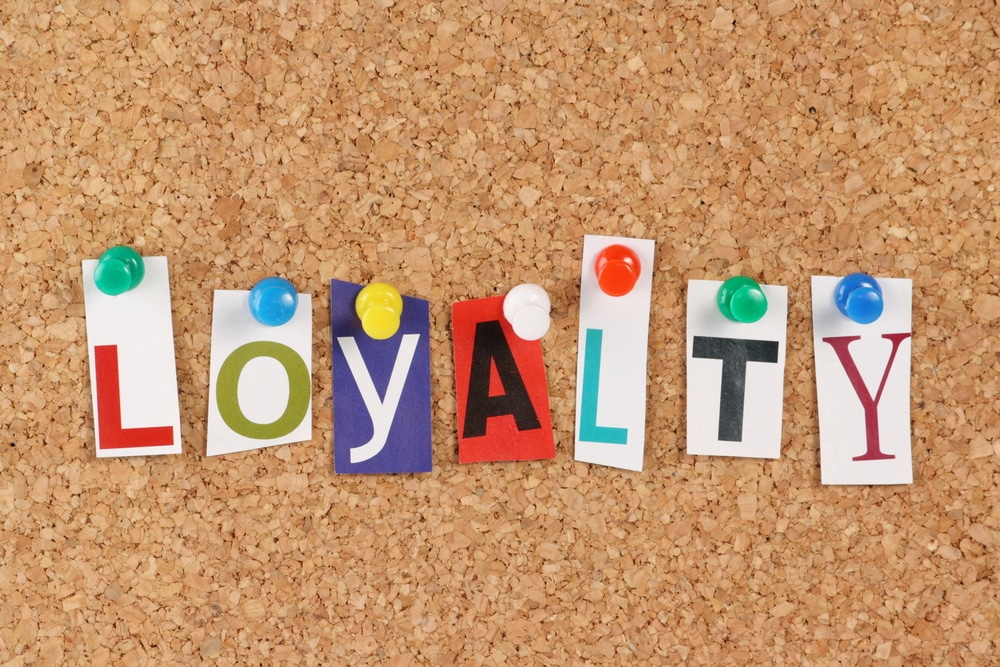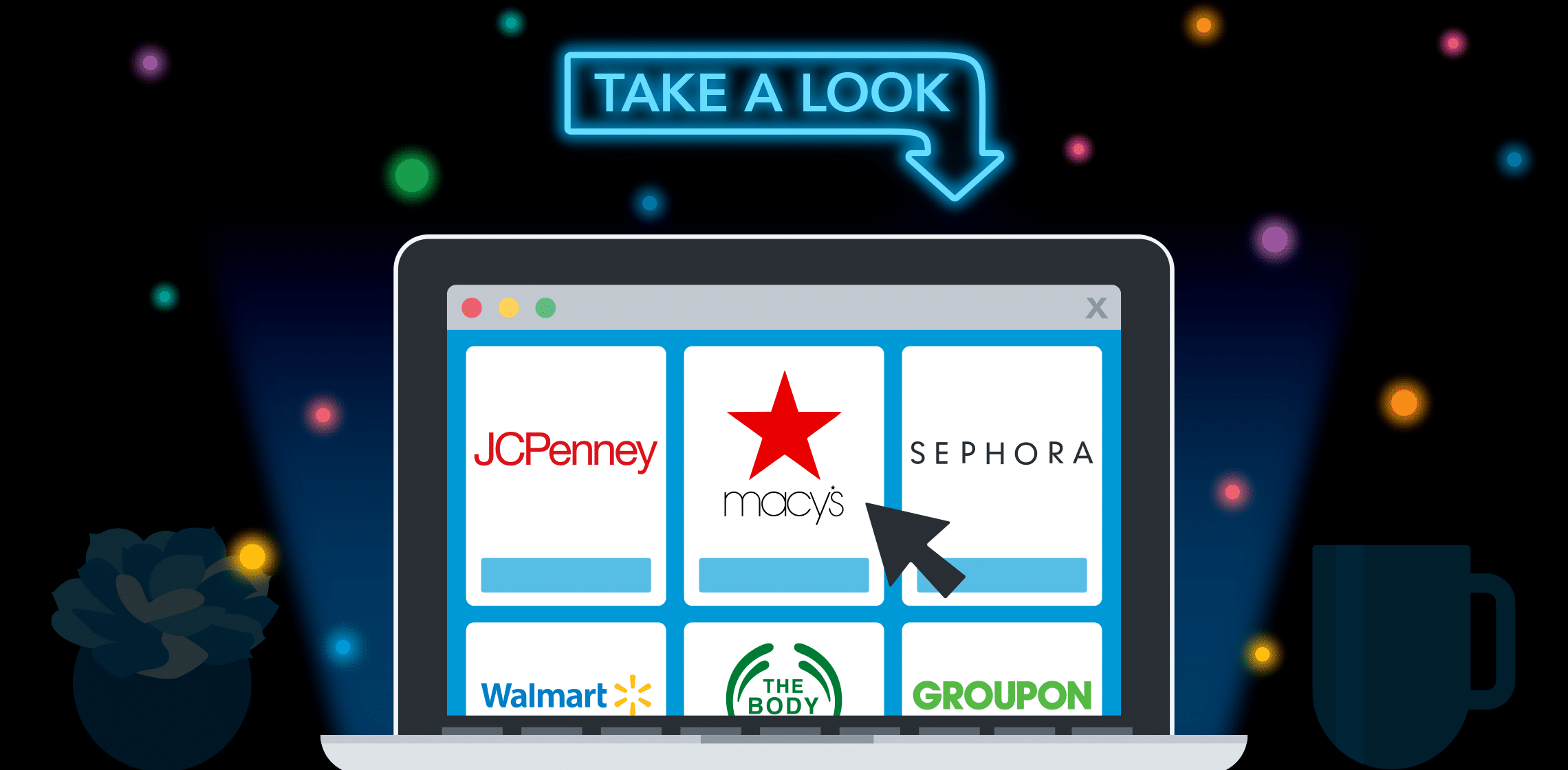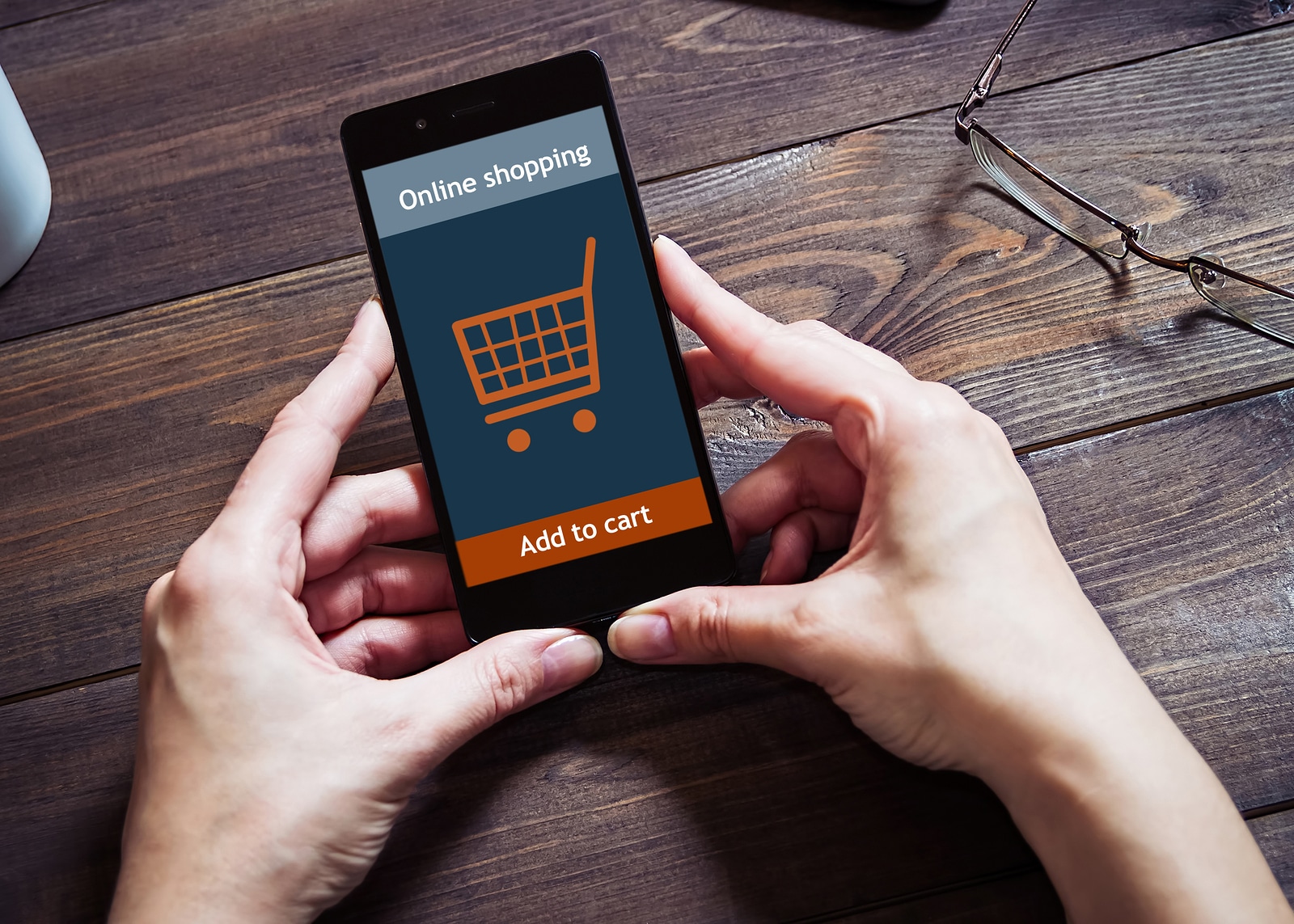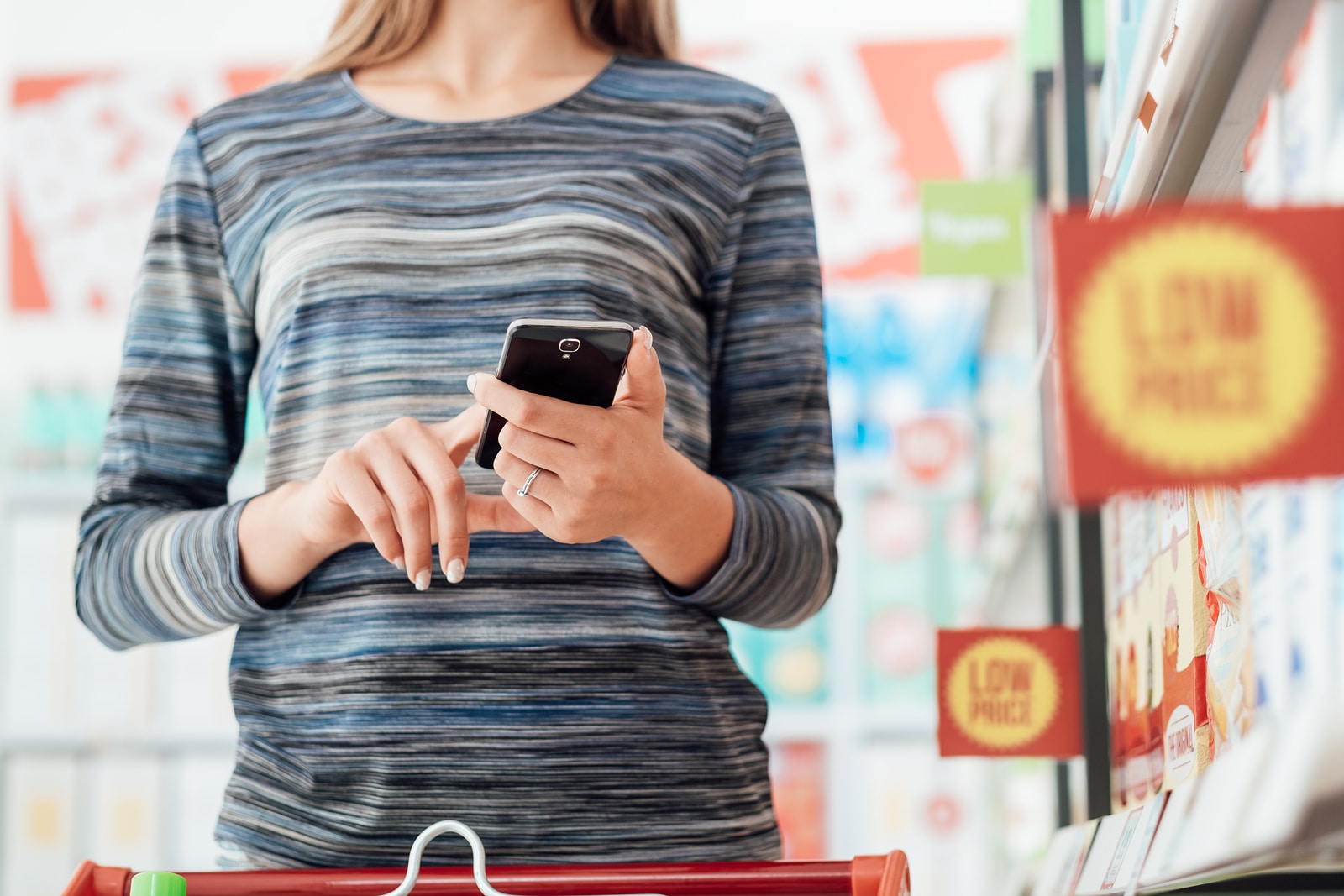Measuring the efficacy of customer loyalty programs in retail can also help brands discover their most valuable micro-influencers. Continue reading “Why brands should utilize customer loyalty programs in retail to incentivize the shopping experience”
Category: Customer Loyalty & Rewards
How your brand can leverage its influences on consumer behavior
Internal and external influences on consumer behavior can completely shift their perception of a brand in an instant. Continue reading “How your brand can leverage its influences on consumer behavior”
Rewarding consumer experiences anytime, anywhere
Bill Demas, Chief Executive Officer
Our vision as a company is to create rewarding consumer experiences for our users anytime, anywhere. We are taking another step in fulfilling that vision today by releasing a web version of Shopkick. This gives users more ways to earn kicks and discover new products, brands and services.
For our partners, the expansion to desktop completes our omnichannel solution, offering deeper insight into consumer behavior across channels and throughout the fragmented shopping journey. Brands and retailers now have the opportunity to reward our users for shopping across desktop, mobile and brick and mortar.
Launch partners include Walmart, Macy’s, Groupon, JCPenney, Sephora, Sam’s Club, Payless, the Body Shop, Stride Rite, Ann Taylor, Loft, Nordstrom, Francesca’s, Lane Bryant, Foot Locker, Sur La Table, and See’s Candies. In addition, we continue to expand our online merchants in the Shopkick app. Most recently we have added Asos, eBags, Etsy, Fandango, the Home Shopping Network, Hulu, Lane Bryant, and Living Social.
Stay tuned for more announcements coming soon on our exciting product roadmap! To learn more about our new e-commerce offering, get in touch at [email protected].
If you have any feedback on this new initiative or any other Shopkick omnichannel solution, send me your thoughts at [email protected].
Mobile app marketing: strategies to generate the highest ROI
Mobile app marketing is a growing way for companies to reach out to consumers at the right time. Continue reading “Mobile app marketing: strategies to generate the highest ROI”
Uncover the consumer insights you’re missing with social media
Kim Bielak, Marketing Manager, Shopkick
It’s 2018 and no secret by now that social listening is a great addition to your market intelligence toolbox. But is your brand really taking advantage of the wealth of information about your consumers that you could be harvesting from this rich digital soil?
As a Marketing Manager responsible for both our social media channels and various market research sources at Shopkick, pouring through insights, feedback and personal stories from our users on social media is one of the most rewarding parts of my job. It never fails to give me a refreshing new perspective on why we do what we do.
So, whether you’re new to social media or just looking for new ways to share the voice of your consumer throughout your organization, here are 4 ways I’ve come to find social media incredibly valuable in finding insights that can translate into real business impact.
- Understand Your Core Audience Demographics & Interests
You have at least 4 communities with platform-provided analytics at your fingertips to understand who your core customer is, and your sample size is generally not insignificant. Not only can you triangulate age, gender, household income, and other demographic information from sources like Facebook and Twitter Analytics with your other customer data sources, you can also find an enormous source of additional color from asking questions such as what your fans’ favorite music, movies, and books are.
One way you can do this is to type queries directly into Facebook Search like “[Musicians] liked by people who like [Brand].” (Not a bad way to source talent or options for your next spokesperson, eh?) Similarly, services like DemographicsPro will analyze your followers on Instagram and can tell you their affinity with other Instagram accounts, media, and even their most-used hashtags.
- Listen and Look for Patterns

You know the saying: you have two ears and one mouth for a reason. Your customers are out there telling you exactly what they like, exactly what they don’t like, and exactly what they want, and you just have to pay attention long enough to notice it!
First, find out where your brand is coming up organically in conversation by doing a search for your brand’s handle, hashtag, or search term. If a consumer has gone as far as to include you in a public post, it often means one of two things: they absolutely love you, or they absolutely hate you. Be prepared for and really listen to both. While the former is often hard to hear, don’t be too quick to brush it off as whiney behavior. Complaints are often one of your most valuable sources of data, providing clues as to why you’re losing sales, or previously loyal customers. Even if you believe your brand is in the right, remember, your positioning is always in the eye of the consumer, and if you’re seeing a certain perception over and over, you know where you have work to do.
Then there’s the brand love (the best part!). These are your advocates. Are there patterns, or common and relatable things many of your customers have experienced you can source insights from? At Shopkick, we see people talk about using the app to get their steps in as they walk around the mall, going on Shopkick dates with their significant others, or even using the app as a game with the kids to keep them manageable in the store. These are all insights about the unique way people are using our app we didn’t even have to ask for, and have been repeated time and time again. We’ve even been able to mine Facebook comments about some of the brands we work with and have found second uses for products like cat litter and yogurt containers!
From there you can then do the same types of searches for your prospects, competitors, and the larger cultural conversation. If you’re looking to launch a new product, go into a new vertical, or pursue a new target audience, see how consumers are already talking about it. A yogurt brand might search terms like “Greek yogurt,” #Whole30, or even just #breakfast to see what consumers think is significant enough to share. And pay attention to trending topics on Twitter and Google trends, as they are often the first places the next big thing pops up before your insights team has had a chance to do a focus group about it.
Finally, I venture as far as to suggest following your customers and your target audience. Don’t be creepy about it, but within reason, many people get excited when their favorite brands follow them back! This is one of your purest forms of ethnography, as you have a chance to see your customers in their everyday environments. Notice what they include in their profiles, the photos they share, and the moments they find significant. This is truly one of the greatest ways to put a face to your consumer and foster a sense of empathy with their hopes, challenges, and ultimate business needs.
- Ask Them!
I’m not suggesting you ask for your fans’ household income and divorcée status on Facebook, but do ask engaging questions as a great way to acquire some qualitative quotes and insights. For example, we ask our users what they’re saving their Shopkick reward points (called kicks) for all the time. It was on Facebook that we discovered the wealth of users saving their kicks for Disney vacations, but were doing so by cashing out for Target gift cards in the app, and then re-buying Disney gift cards in-person at their local Target stores! If we had only looked at our internal gift card redemption data, we would have seen what we already knew: Target was one of our most popular gift cards. Never would we have realized that so many of our users actually wanted us to add the option of a Disney gift card instead. Needless to say once we added it, our users were very pleased.
Another way to translate these insights into more quantitative data is to export your comments and code them. We recently asked our users what else they wanted to earn kicks for and were able to codify over 800 responses to determine the most popular requests. Once we found the offers we didn’t have enough representation for that were in high demand, we were able prioritize outreach to new partners and business development. We also had the great added value of new crowd-funded ideas we may not have previously thought of, such kicks for experiences, video streaming, and, once again, rewarding people for getting their steps in!
- Create a Testing Ground

Finally, testing is one of my favorite uses of social media that often gets overlooked. Say you’re looking to run a major new ad campaign, or exploring a messaging refresh – you have 365 days to experiment with the light version on social media before you commit to your whole investment! At Shopkick, for example, we’re planning a brand campaign where we’ll be delivering a wish in every state across America this year. Not a small program to risk the types of responses we were going to get in. So, while we were still in concepting, we asked users what they’d wish for first on social media. Not only did we get a flood of responses to demonstrate that the campaign definitely resonated, but we also got tons of insights from fans’ wishes to guide the direction of the overarching campaign message itself. You may not be able to A/B test an ad or a new product every day in the real world, but with social media you have the ability to test and iterate on an idea rapidly until you strike something that truly makes an impression with your community.
At the end of the day, social is only one piece of a full market research toolkit, but it’s certainly one with a lot of unbridled potential, and not to mention wildly cost effective. The rise of social media, big data, and other digital intelligence sources should not become a reason to neglect traditional research methods such as focus groups, IDI’s and prospect surveying. However, if you haven’t yet recognized the power of social media, don’t miss an incredible opportunity to bring the voice of the consumer to your organization. It’s a powerful way to continue to inspire and remind your team of the real faces and the real people whose lives your brand touches each and every day.
Tips for mCommerce customer relationship marketing
Customer relationship marketing is a segment of marketing that focuses not on the immediate sale but rather on ongoing business. Obviously, the value of a loyal customer is high. In fact, it’s estimated that a 5% increase in retention can lead to a 25% increase in profitability. However, keeping customers shopping with you can be a challenge, especially when you consider how many options these customers have. This is especially true for emerging channels, like mCommerce, where just about every major brand or retailer is trying to gain market share.
 For an effective customer relationship marketing campaign, companies need to bring together three key components: They must create trust, establish a customer connection, and reward customer loyalty. All of this needs to occur in a digital space, which can be a challenge without the face-to-face contact that a brick-and-mortar business can deliver. Using innovative mobile apps that remember your customers and encourage them to revisit your brand can help you develop a customer relationship marketing strategy that offers true, enduring value.
For an effective customer relationship marketing campaign, companies need to bring together three key components: They must create trust, establish a customer connection, and reward customer loyalty. All of this needs to occur in a digital space, which can be a challenge without the face-to-face contact that a brick-and-mortar business can deliver. Using innovative mobile apps that remember your customers and encourage them to revisit your brand can help you develop a customer relationship marketing strategy that offers true, enduring value.
Creating Long-Term Customer Trust
Building long-term customer engagement in mCommerce requires establishing your brand as a leader not just in your industry but also in technology. That means providing a secure environment where consumers will feel comfortable sharing their mobile information. In one study, just less than half of consumers reported that they’d only feel comfortable shopping via mobile if their phone number was protected. About 44% reported that they were concerned that mobile payment options were not secure. Allaying these consumer concerns requires offering:
- Transparency: A clear user agreement, showing exactly how your company collects data and how that data will be used, goes a long way toward improving the perception of your company’s trustworthiness.
- Payment technology: The accounts that your company accepts payments through must use the most recent security technology to prevent hacking and other malicious attacks. Digital wallets are also growing in popularity, with 51% of consumers wanting to use retailer apps for making faster purchases through such methods.
- Usability: More than half of consumers report that a poor experience on a mobile site makes them want to disengage with a company. You only have one chance to make a good mobile impression, so ensuring your site is performing at its best is key to keeping customers engaged.
You need to be able to build trust with consumers if you want them to engage with your brand online. However, trust alone won’t keep consumers coming back. For that, you need to use your app to cater to your consumer on a personal level.
Leveraging a Personal Touch in Customer Relationship Marketing
Artificial Intelligence (AI) is becoming a popular option for companies that want to create a closer connection with their consumers. AI allows you to remember a consumer, predict their actions, and make recommendations based on those predictions. This is a strategy that retailer Cosabella implemented, which reportedly led to a 30% improvement in conversion rates.
The company used an AI program, called Albert, to help better identify potential customers on a global basis. Albert was able to review millions of pieces of trend data and then make predictions on when and where those trends would be most popular. It was a job that would take the average human, or even agency, months to tackle.
Using a few basic data touchpoints—like location and prior purchase history teamed with customer profiles—can help you target the right offer to the right customer.
Of course, not every company needs to roll out a high-tech program. Instead, using a few basic data touchpoints—like location and prior purchase history teamed with customer profiles—can help you target the right offer to the right customer. It’s also possible to use this data to determine genuine signals of purchase intent and to filter out fraudulent traffic. This saves you marketing time by allowing you to focus on the best prospects. It also creates a personalized connection that you can leverage to build customer relationships. The final step in all of this is to use a customer rewards program to incentivize purchases.
Round Out Customer Relationship Marketing With Rewards
The process of customer relationship marketing does not end at purchase but rather is an ongoing strategy that requires continued engagement. One way to manage this is by offering a customer rewards program via a mobile app. Such programs allow you to incentivize purchases at less of a cost. Here is how the system works:
- The customer downloads a shopping app, like Shopkick, and uses that shopping app to earn rewards for engaging with your products or retail locations.
- When the customer collects enough points (known as kicks), they can redeem them for gift cards. This encourages a return visit, where the customer can purchase even more, and earn yet more points.
- The purchase cycle continues.
These rewards benefit the customer and the company since you avoid the margin cut of an immediate discount and instead deliver on brand affinity. Finally, it makes the customer feel like you value their repeat business, ultimately building loyalty.
Building customer trust, offering a personalized experience, and finally, rewarding loyalty all work together toward developing a strong customer bond. The customer comes to rely on your brand because they believe it is focused not only on the bottom line but also on their satisfaction. These cornerstones of customer relationship marketing allow you to build consumer loyalty in the online marketplace, even when those customers have virtually thousands of options available to them.
Shopkick can be a valuable part of your customer relationship marketing strategy. For more information on becoming one of our partners, contact us.
Image courtesy MrMrsMarcha
Creating customer value in retail: 5 ways to incentivize your customers
Creating customer value isn’t just about gaining more revenue from customers, it’s also about building relationships with modern customers to keep them returning to your locations. That’s not to say customer value doesn’t have its impact on revenue: Customers who think a retailer is providing excellent service spend 17% more than those who don’t. Part of that excellent service is making customers feel valued, and you can do that by incentivizing them.
 Often, we see the word “incentivize” and immediately think “discount.” Jumping to an immediate discount to incentivize customers isn’t the way to make them feel valued. In fact, lowering your prices could potentially lower their value perception of your products. To truly create customer value, you need to focus on five key factors in incentivizing your customer: personalization, engagement, rewards, recognition, and convenience.
Often, we see the word “incentivize” and immediately think “discount.” Jumping to an immediate discount to incentivize customers isn’t the way to make them feel valued. In fact, lowering your prices could potentially lower their value perception of your products. To truly create customer value, you need to focus on five key factors in incentivizing your customer: personalization, engagement, rewards, recognition, and convenience.
Strategy #1: Create Customer Value by Focusing on Pain Points
Pain points, in relation to retail, are the real or perceived problems that your customers are trying to solve when they visit your location. For retailers, this is obviously that they need products, and they need someplace to purchase them. These individuals could choose any retailer. Examining their pain points is how you’ll identify the unique service your location offers, which you can then use to make the customer feel you’re catering directly to them. Most pain points in retail can be broken down into four basics:
- Convenience: Customers may choose a specific location because it’s convenient for them, as it’s close to their home or workplace, or because it offers quick service.
- Cost: Price conscious consumers will generally seek out lower cost, discount options.
- Selection: A location may be chosen because a customer has specific needs. For example, they may choose to shop at an organic market due to dietary restrictions.
- Service: For some consumers, in-store services like bakeries, butchers, and deli counters are things they seek when they’re looking for a location to shop.
The best way to determine what pain points drive customers to your location is to survey them. Simply ask them to rank those categories in order of importance. Then, you can focus your efforts on catering to the most important. If access is the reason, seek out ways to speed up checkout. If service is what they want, offer more in-store amenities like cooking demonstrations or seasonal specials. This is a way to make customers feel like you’re catering to their very specific needs in-store. Another way to do this is through community engagement.
Strategy #2: Create Customer Value by Engaging With the Community
Customers don’t just want a store that makes them feel valued, they want one that values their community. Sponsoring local schools, sports teams, and other points of local pride—as well as sourcing local goods—serve to create a community connection.
Locally grown items are in high demand right now. By 2019, locally grown foods are expected to generate about $20.2 billion in sales, up from $11 billion in 2014. A retailer that wants to engage with the community can also take advantage of this movement by locally sourcing some items. This offers retailers a connection to the community that will make customers feel valued.
Strategies #3 & 4: Rewards and Recognition as a Means of Creating Customer Value
Rewards and recognition go hand-in-hand, as they’re ways to incentivize purchases while also showing appreciation for your most loyal customers. Rewarding customers is simple through a shopping rewards platform like Shopkick, which allows you to offer an incentive to shop while also limiting the cost to you. Here are a few ways that a shopping app program benefits both the customer and the retailer:
- Offers collectible points instead of discounts: With shopping app rewards, consumers receive points that they can use for future purchases. This offers the same incentive as a discount, without the same cost to the retailer because consumer perception of the value of points is often higher than the dollar amount.
- Promotes savings on future merchandise and return visits: It has been shown that about 47% of the time consumers prefer being able to save points toward future merchandise purchases over receiving an immediate discount. For the retailer, this point-saving encourages a return visit—and more spending—from the customer in the future.
- Ease of use trumps coupon clipping: For the consumer, a rewards program is much easier to use, especially when it’s tied directly to their smartphone. Instead of seeking out deals or clipping coupons, they’re able to collect rewards points simply by making purchases. For retailers, these programs are easier to keep track of than coupons and discounts.
With rewards programs, the benefits for retailers are twofold: You reward customers for visiting your location while enticing them to spend more, and you create loyalty and inspire return visits as customers feel recognized and respected by their retailer.
Strategy #5: Creating Convenience Through Tech
Consumers these days are driven by a need for convenience. They want to be able to find items easily and finish their shopping quickly. Nearly three-quarters of consumers report that technology has made it easy to take their business elsewhere. When consumers are looking for a retailer, technology can be a way to pull market share from your competitors. All you have to do is offer the technology that makes it clear you’re the more convenient choice. Consider app-based options like:
- Better budget planning – Consumers can get familiar with products and prices before they leave the house. This allows them to set a budget for their shopping that they can stick to, as they can get a good idea of how much they’ll need to spend before they get to the store.
- Product comparisons: Once consumers find the products they need during the preshopping phase, they can compare the available options. Consumers are savvy shoppers these days and are easily able to research items online. Offering the ability to compare products via mobile can help build confidence in your location.
- Alerts by geolocation: Consumers always appreciate the opportunity to earn rewards and in-store events, and app-based alerts can notify shoppers of these events while they’re in the seemingly endless shopping aisle.
Providing the technology that makes shopping easier for your consumers will make them feel valued. It will also help to create the connection that keeps consumers returning to your location, even when there are virtually limitless places they could take their business.
Creating customer value helps retailers build long, lucrative relationships. Personalization and community engagement work to provide an emotional connection between you and the consumer. Rewards and recognition show that you appreciate your customer’s business. Finally, convenience makes shopping with you easier than shopping with your competitors. All of these strategies incentivize your customers by establishing a mutually beneficial relationship.
Shopkick helps our partners create customer value by giving them the technology they demand while incentivizing their purchases using redeemable rewards points. For more information, contact us.
Image courtesy stokkete
[Infographic]: Seasonal Shopping Trends 2017
They say the best predictor of future behavior is past behavior, which is why we have taken a look back at key behaviors our users exhibited during seasonal peaks throughout 2017.
In our latest infographic, we review what Shopkickers were most engaged with during important retail moments throughout the year. As 2018 trends already start to take shape, we look forward to seeing how these holiday trends will continue to grow and shift over time.

To learn more about how Shopkick can help you boost engagement during seasonal peaks, get in touch at [email protected].
The QSR marketing strategies with the greatest potential ROI
When it comes to QSR marketing strategies, the best potential return on investment can be achieved by reaching consumers at the right moment. Continue reading “The QSR marketing strategies with the greatest potential ROI”
Fast food advertising budgets: How your QSR brand can compete for less
Fast food is one of the most highly advertised consumer-facing markets in the world. Recent figures indicate that $4.6 billion is spent on fast food advertising annually in the US alone. The reasons behind why this segment advertises so heavily are high competition coupled with a limited window of opportunity. Consumers make fast food decisions in the moments right before they buy, which means that all the advertising in the world isn’t going to reach them if it’s done at the wrong time. A fast food advertising budget, then, can be stretched when you focus not on the quantity of your advertisements, but on the timing instead.
 While the high degree of competition is a challenge for quick service restaurants (QSRs), they also have a unique opportunity: they can leverage mobile technology to easily target their consumers when they’re most likely to stop at a fast food franchise. This is something accomplished through mobile moments, as smartphones that travel with consumers are the best way to reach out to them while they are on-the-go. Instead of sinking a high percentage of your precious advertising dollars into a widespread, scattershot campaign, you can instead market smarter by traveling with the consumer.
While the high degree of competition is a challenge for quick service restaurants (QSRs), they also have a unique opportunity: they can leverage mobile technology to easily target their consumers when they’re most likely to stop at a fast food franchise. This is something accomplished through mobile moments, as smartphones that travel with consumers are the best way to reach out to them while they are on-the-go. Instead of sinking a high percentage of your precious advertising dollars into a widespread, scattershot campaign, you can instead market smarter by traveling with the consumer.
Use Your Fast Food Advertising Budget to Focus on Mobile
App-based advertising is capable of reaching consumers as they’re near a QSR location or looking for a place to eat. This can be a better alternative to social media for many fast food companies as this form of advertising reaches consumers when they’re in a buying state of mind.
Domino’s is a brand that has fully embraced app-based advertising. In 2010, they became early adopters of the technology and began focusing heavily on mobile advertising via apps. By 2015, the brand saw a 19% increase in sales and reported more than half of their orders were made via mobile devices. For 25 consecutive quarters, the brand saw increases in sales. Domino’s did this by essentially going all in on digital with their fast food advertising budget. Specifically, the company:
- Offered mobile orders, payments, and tracking: Consumers can use the mobile device for all stages of the ordering process, from beginning to end. There’s even an optional tracker that allows consumers to see when they can expect their food to be delivered.
- Integrated its rewards system: Domino’s has fully integrated their QSR rewards program into their app, meaning users are automatically credited with points.
- Personalized the experience: On the tracker, consumers can see the name of the person making their food, what time the driver left the store, and can even leave a message for the location.
- Target upsell opportunities: When using the Domino’s app, several options will be suggested to the consumer prior to check-out based on their order history, such as desserts, drinks, or sides.
Domino’s essentially took a mobile-first approach to their advertising budget. It was a risky move, but it worked to their benefit. Of course, it was costly upfront, as developing a proprietary app for a QSR mobile advertising strategy can be quite expensive. For brands that are looking for a way to integrate mobile app marketing while limiting their initial costs, an alternative can be found in partnering with a third-party shopping app.
Budget Saving Advertising Alternatives to In-House App Development
When your fast food advertising budget is limited, an ideal way to take a mobile-first approach is to work with a third-party app that is well established. Shopping apps, specifically, are good tools to make the most of your advertising dollars while minimizing the direct cost to your budget.
When considering a third-party app partnership, look for apps that offer:
- A high number of active users: One of the benefits of using a third-party app is that you don’t have to worry about driving adoption. The app should come with a built-in audience of active and engaged users within your target audience.
- Proximity marketing: Proximity marketing allows you to communicate with a mobile user when they’re close to one of your locations. This strategy can determine signals of purchase intent and use them effectively, increasing the chance of reaching that consumer as they’re about to make a dining decision.
- A rewards-based system: The best shopping apps won’t be dependent on offering deals or coupons to get consumers to buy your product. Instead, they’ll offer rewards, such as points for making a purchase. This incentivizes buyers without forcing you to discount your items.
Partnering with an established shopping app can allow you to take advantage of all of the benefits of mobile advertising without the high expense of developing an app in-house. This can be a good way to stretch your fast food advertising budget while increasing your ROI.
A high-performing mobile campaign can be a powerful converter for QSRs, especially when you consider how important it is to be able to travel with your consumers. Consumers make fast food decisions quickly, which means you must also be mobile in order to reach them at that pivotal moment.
Shopkick helps our partners leverage mobile technology to reach an engaged target audience. If you’re interested in learning how far your advertising budget can go when partnering with a third-party app, contact our team today to learn more.
Image courtesy Baramee
Modern customer relationship building strategies for the digital shopper
Customer relationship building strategies are one of the cornerstones of marketing to help increase brand awareness, build market share and growth, and improve overall product perception. Many companies are seeking ways to leverage expansions in artificial intelligence and utilize smart technologies to create meaningful conversations with customers. Most modern customer relationship building relies on technology in one form or another, so knowing how to capitalize on will be an integral aspect of any given consumer-focused strategy.

It may seem contradictory to use technology to build customer relationships since technology often lacks a human touch, but tech is the most efficient way to manage thousands of customer relationships or more. The key is to temper technology-based responses with human ones, so customers still feel as though they are being heard on an individual level. By implementing new technology—beacons, bots, and mobile shopping apps—you can build a relationship with your customers that will keep them loyal to your brand without placing an undue burden on your resources or harming your bottom line.
Customer Relationship Building Strategies With a Tech Twist
Dollar Shave Club is a great example of a company that managed to segue personal customer relationships into a billion-dollar success story. The company made a name for itself by selling memberships to an automatic razor delivery service, but it built a brand off of its outstanding customer relationships by developing experiences for consumers that still include:
- Exclusivity: Members of Dollar Shave Club are given access to an insider newsletter and receive regular, personalized messages from the brand. Club members are also entered into a referral program that rewards them for inviting others to join the service.
- Engagement on social media: Users of Dollar Shave Club can post images of their deliveries to the company’s Facebook page. The brand then selects their favorite posts, and the winners receive a free T-shirt. Providing a creative and engaging customer rewards program—whether for points, merchandise, or cash back—can be a powerful relationship building tool.
- Rapid responses: The average response time to an email sent to the team at Dollar Shave Club is less than a day. Questions or complaints posted to social media sites are answered within a few hours. Rapid responses build trust between consumers and the brand and make their loyal subscribers feel their concerns are being considered and addressed.
- Personalization: Dollar Shave Club uses data from their customers to send occasional personalized messages and upgrade offers. Use of this data allows the company to promote highly specific products in their monthly email messages, which increases the likelihood of conversion.
Each of Dollar Shave Club’s strategies is dependent on delivering their message in a personalized way, so the consumer feels the brand is speaking directly to them. Technology allows Dollar Shave Club to maintain an air of personalization, while also advertising on a mass scale.
Tech That Automates Personalization for Building Customer Relationships
Technological advancements like machine learning, data collection, and artificial intelligence, are making it possible to deliver messages and engage customers without investing significant man-hours. This allows companies to leverage the flexibility of technology while maintaining a small, intimate atmosphere around their brand.
Here are just a few options that allow even large-scale companies to manage this strategy successfully:
- Auto response bots: Auto response bot systems are a new take on the touchtone hotlines of old. These systems are capable of recognizing important keywords and responding in a way that feels genuine. For example, a consumer might type in, “I’m having a problem with my billing.” The bot could then be set to respond, “I’m sorry to hear about that. Let me help you. I currently have your billing information as X? Is this correct or do you need to change it?”
- Customer experience managers: Customer experience managers, which are mainly database systems designed to collect and organize your customer data, allow companies to separate said data into various audiences for retargeting. So, in the example of Dollar Shave Club, a female consumer may be more concerned with razors for shaving her legs, while a man might be more interested in how to avoid beard rash. Or, an older consumer might have more issues with ingrown hair due to thinner skin, while a younger one might have problems with shaving cream irritating acne. All of these factors can be accounted for by implementing a CEM to personalize experiences for specific consumers.
- In-store beacons: Bluetooth-enabled devices that communicate with smartphones are helping build relationships with consumers as they’re in the shopping aisle, an aspect of mobile retail proximity marketing. Upon entering a retail location, a shopper’s mobile device receives a signal from a beacon if they have downloaded the retailer’s in-store app. The app will then offer the shopper deals, coupons, or location details for items he or she has previously purchased or shown interest in.
- Shopping apps: Shopping apps allow brands to connect with consumers at the very moment they are looking for advice on where to shop and what to buy. These apps often offer rewards for purchasing or scanning the barcode of a featured brand. This kind of incentivized shopping experience allows brands to build a relationship and understand buyer behavior.
Connecting with consumers must include developing a way to personalize their experience quickly, efficiently, and seamlessly. This is best accomplished via the use of technology. Shopping apps, in particular, allow brands to connect directly with consumers at the very moment they are planning to make a purchase or seeking guidance.
Customization and personalization, backed by technology, helped Dollar Shave Club build a following for their brand. They understood what was important to consumers and chose to connect with them in a unique way. This customer relationship strategy helped them build their audience on an individual level, even as they expanded into a billion-dollar business. And your brand can follow suit by using a shopping app to power your connection to your buyers.
Well-designed shopping apps that make everyday shopping more personal and rewarding can give you access to real-time customer data, allowing you to make in-the-moment and relevant recommendations. They also allow you to create a relationship with a customer which can turn them into a loyal user.
Shopkick helps our partners build relationships with consumers by offering them opportunities to earn rewards for engaging with your brand. For more information on how Shopkick can help you create a stronger consumer connection, contact our team today.
Image courtesy onephoto








![[Infographic]: Seasonal Shopping Trends 2017](https://www.shopkick.com/wp-content/uploads/2017/08/alcohol-advertising.jpg)

